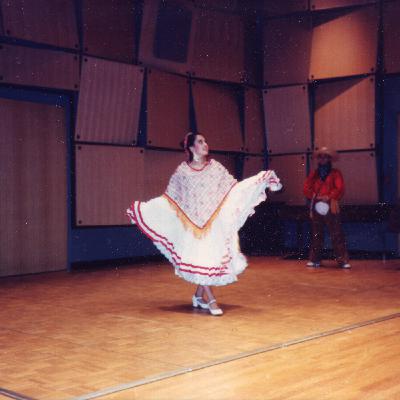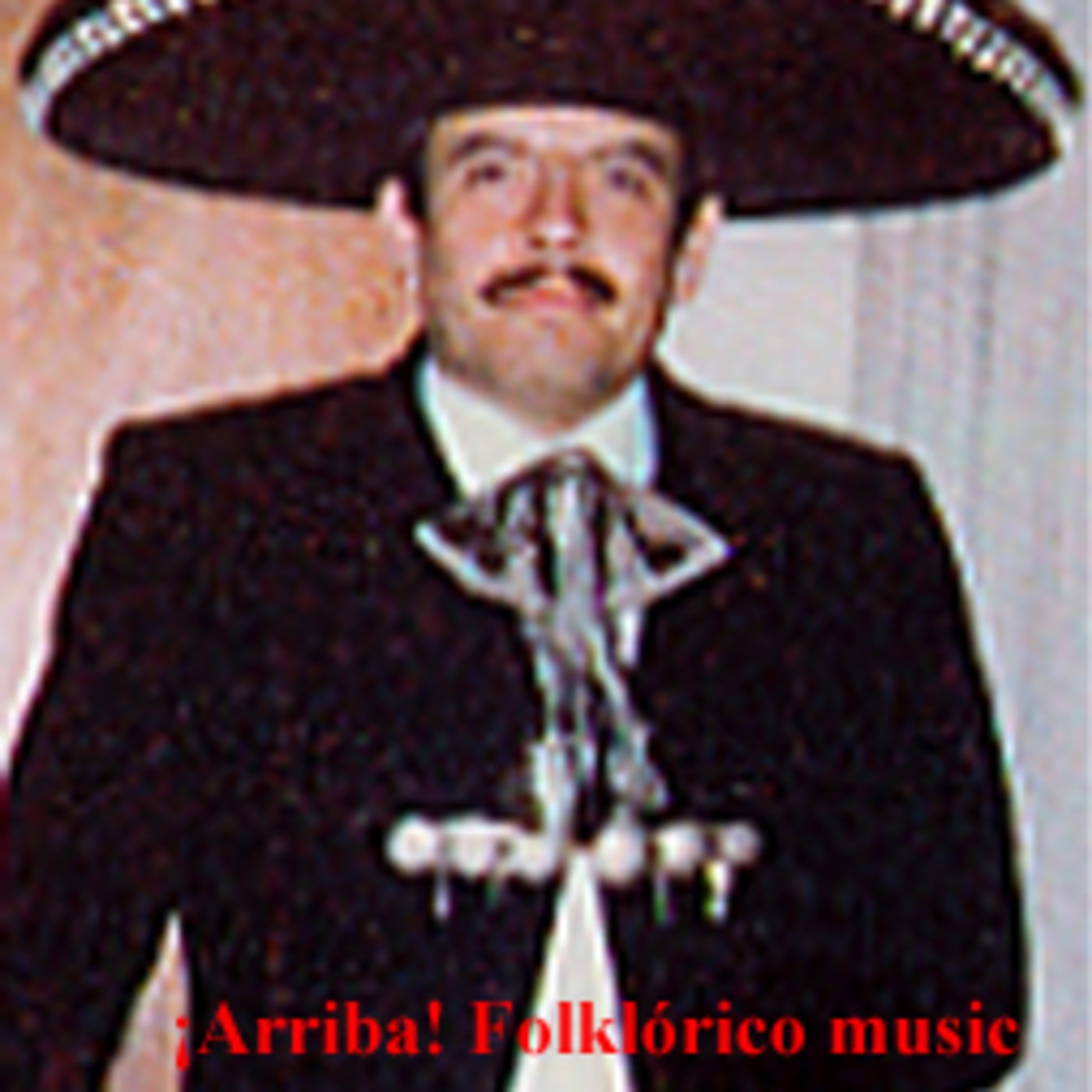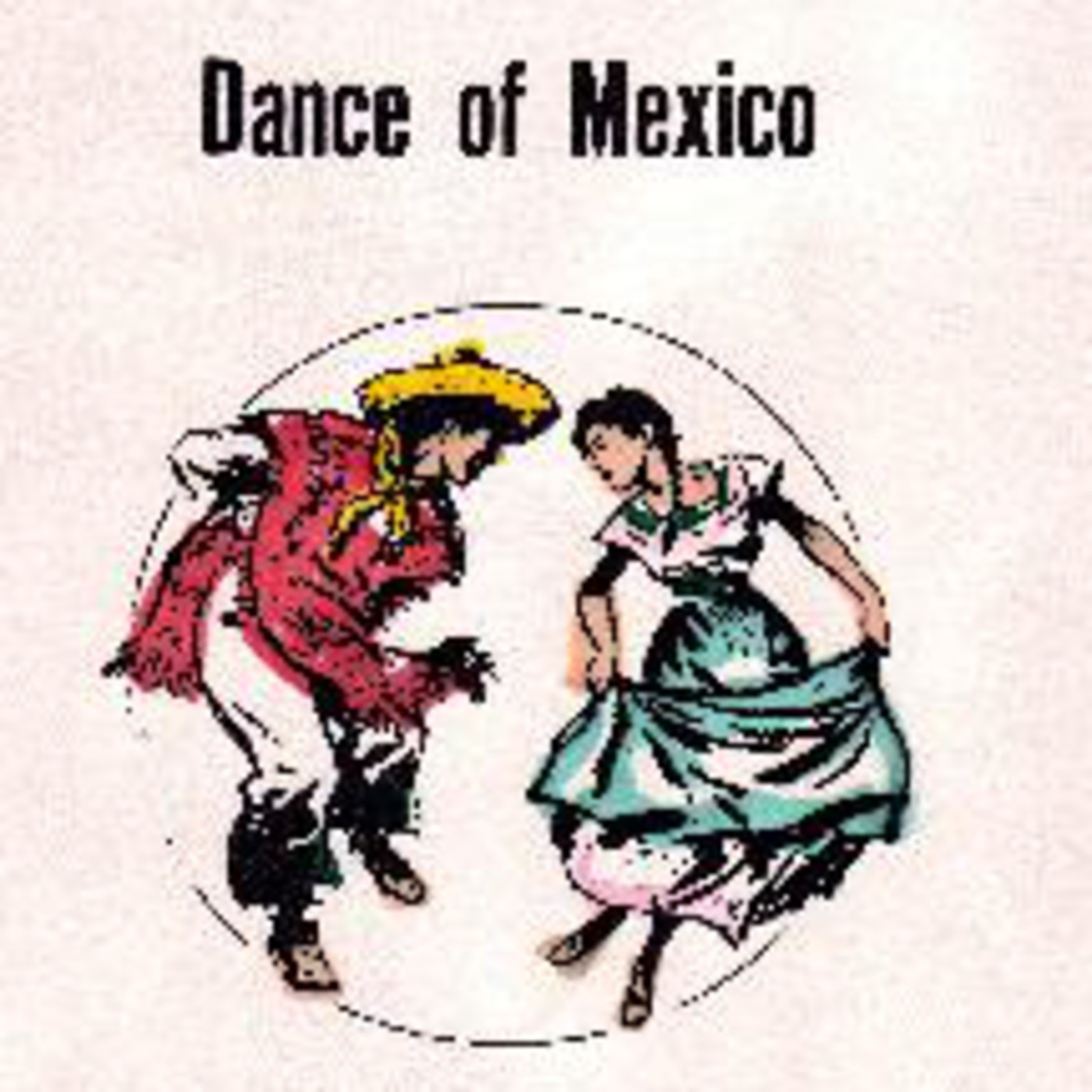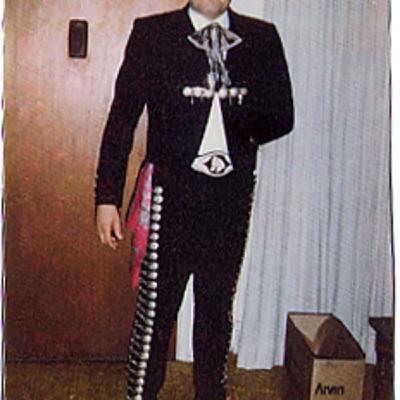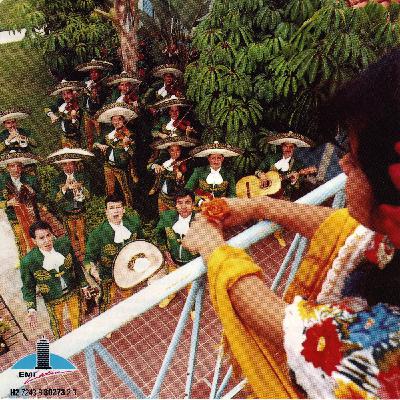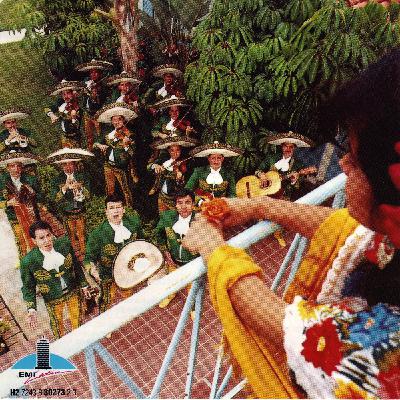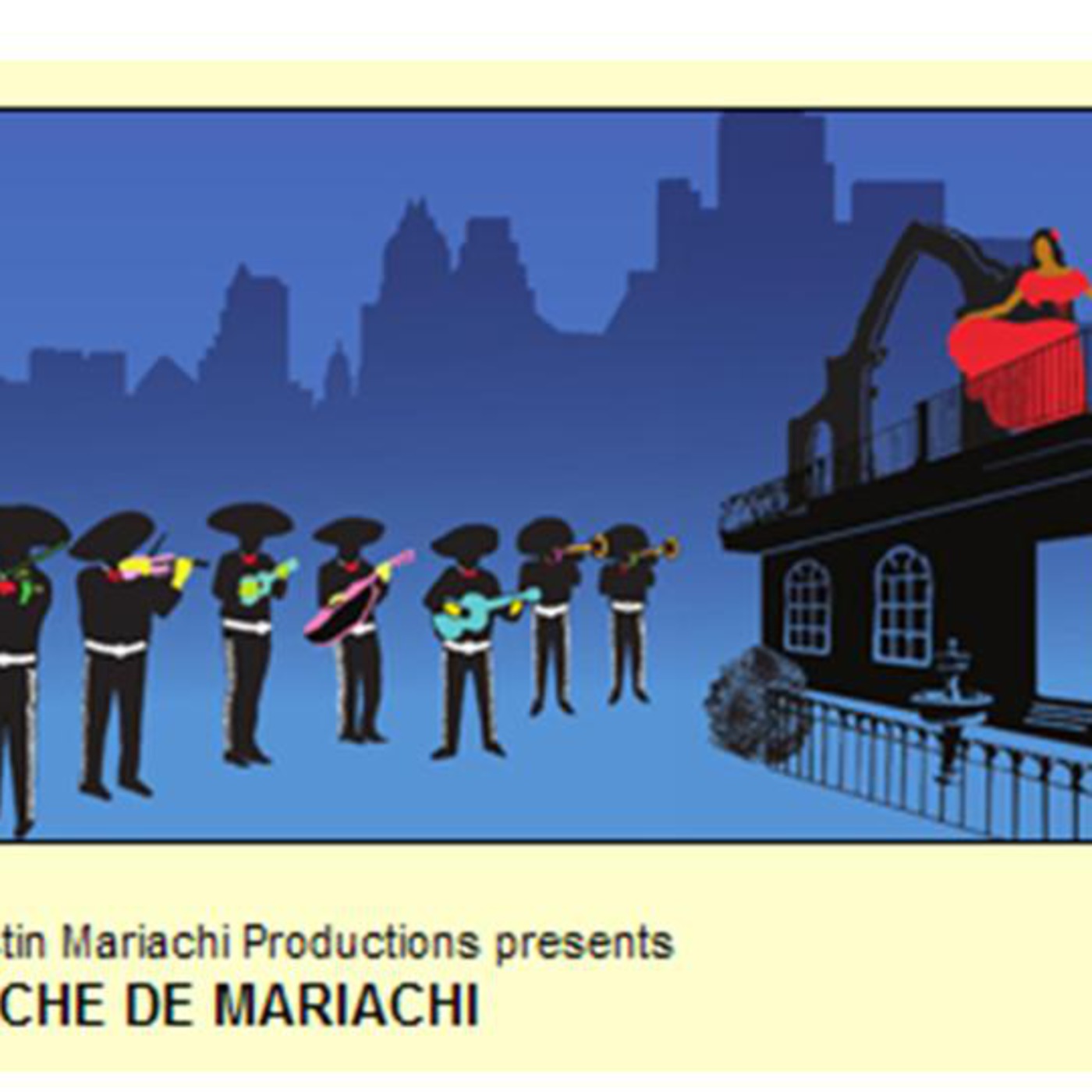Discover Arriba! Folklorico Music and Dance of Mexico
Arriba! Folklorico Music and Dance of Mexico

Arriba! Folklorico Music and Dance of Mexico
Author: Fred Castaneda
Subscribed: 17Played: 271Subscribe
Share
© Copyright 2025 Fred Castaneda
Description
This is the podcast about the history of Mexican folklorico dance and music from the Pre-Columbian era to the modern day. This will have not only descriptions and samples of the different pieces from different regions and eras, but also live interviews with the musicians and artists that have been involved with Mexican folklorico music and dance. In particular, mariachi musical groups, trios and other bands will be discussed.
22 Episodes
Reverse
In this episode, we explore the region of the Huasteca and the musical genre of the Huapango.
The Huasteca region consists of:
- the southern part of the state of Tamaulipas;
- the northern part of the state of Veracruz;
- the state of San Luis Potosi;
- the state of Hidalgo
- the state of Queretaro
- the state of Puebla
We introduce the section by the introduction of 2 Huapangos:
- Brief introduction of the Classic huapango of LA PETENERA, as played by a conjunto huasteco; and
- Brief introduction of the Modern huapango EL REY DE LA HUASTECA from Jose Hernandez, the director of the Mariachi Sol de Mexico.
We then go into the elements of the Huapango, which includes:
- the inverted verses;
- the falsetto voice (in Spanish, falsete);
- the dynamic and improvised lyrics of the pregronero;
- and in some cases, the picaresque and rogue-like double-meaning huapango picante.
For the latter, we demonstrate with a case-in-point of the huapango picante EL QUERREQUE.
Also, to demonstrate the falsetto voice (falsete), we have the classic huapango of LA MALAGUENA, as compared to the purist version from the original style as played by the Trio Chicontepec. Both of these are only a few seconds in length to show the contrast of the same song, but in different styles that have emerged for the benefit of entertainment.
And finally, we end the episode by playing the entire version of the modern huapango, which was written and composed and arranged and played by Jose Hernandez. He is the director of the Mariachi Sol de Mexico from South El Monte, California, and whose restaurant CIELITO LINDO is highlighted during the interview with him in episode 2 of this podcast series. The theme and story line for this song, published in 2005-2006 by Hernandez Productions, is also explained.
In this episode of Arriba! Folklorico Music and Dance of Mexico, we travel to the South of Mexico on the Pacific waters, stretching along the coast to the northern part of the Isthmus of Tehuantepec. The state of Oaxaca has one of the largest populations of native indigenous tribes, or "indios" as the Latin Americans call them.
Of the seven major cultures and areas of Oaxaca, we focus on 2: the Zapotecas and the Mixtecos.
In this episode, the music from the Jarabe Mixteco opens the show.
We also discuss the fiesta that takes place in July which is known as La Gelaguetza, or the "fiesta de la Sierra."
In the capital city of Oaxaca itself, we describe one of the main indigenous dances, DANZA DE LA PLUMA.
Also, during the festivities of La Gelaguetza, the food is rich--in particular, the famed MOLE NEGRO Oaxaqueno.
In addition to the mention of the archaeological zones in the region--such as Mitla and Monte Alban--the episode describes the courtship dance of the JARABE MIXTECO, with its stanzas and tableaus for the CHASE, the TORITO and the conquest of the man over woman to symbolize the move from suitor to marriage partner. Especially symbolic is the rose that the lady carries by the stem in her teeth, and which the man grabs from her with his teeth to symbolize the transition from enagement to marriage.
The episode ends with the ending musical score of the JARABE MIXTECO. It is usually played by big brass bands during the festivities of La Gelaguetza, but here, we listen to a version performed by mariachis.
In this episode of Arriba! Folklorico Music and Dance of Mexico, we explore the idyllic region in Southwestern Mexico, the land of the Tarascan indigenous tribes--the Tarascos-- the state of Michoacan.
The Tarascan tribes are a people that feel that they have never been subjugated by the Spaniards--although their land was occupied. Like other indigenous tribes of Mexico today, they still mingle their Spanish language with inclusions of phrases and words from their own native dialects, which descend from the word-of-mouth teachings in the Tarascan tongue.
Case in point: the song in the audio podcast episode demonstrates the Tarascan lady singing in Tarascan language, then ending up with a Spanish phrase, as she delves into the eternal theme in Mexican folklore--that "Life is a Dream" (la vida es sueno).
In addition to the song whose lyrics are mixed with both languages, the instrumental piece of folklore that is common to the entire region of the Tarascos is the Jarabe Michoacano. This is a longer dance, in which the shyness of the woman is characterized by her never looking at her partner--instead, she stares at the ground through most of the dance, until the joy of the parts signifying fiesta, burro, noviazgo, aguila, estrella, and the final pursuit or chase.
In the end, the man (who is wearing a zarape or large gavan) covers her braided hair under her straw hat (sombrero michoacano) and symbolizes the marriage--a union of the man and woman.
A fitting end to this jarabe from Michoacan, as this dance contains all the symbolism of work, life, fiesta and fun, courtship (as all jarabes are), conquest of the lady's heart, and commitment of marriage and acceptance of the man by the woman.
This episode describes the wonderful evening at the Paramount Theatre in Austin, Texas, with the first annual gala event called NOCHE DE MARIACHI.
This was not a "battle of the bands." Rather, it was a community of mariachi bands in and near the Austin area for a celebration of the mariachis in central Texas.
The quality mariachis that were featured and played their songs (which did not overlap with other pieces performed by other groups)--
- Mariachi Los Lobos
- Mariachi Estrella
- Mariachi Suroeste
- Mariachi Relalmpago
and there was a special solist, Rebekah Ramos, who was accompanied by el Mariachi Relampago, when she performed 2 songs, one of them being SOLAMENTE UNA VEZ. What a lovely piece and performed exquisitely well.
There was a folklorico dance group called the Pan American Ballet Folklorico that performed 2 numbers--they opened the event with LA CULEBRA and ended the show with dancers in the aisles of the theatre as ALL the mariachis accompanied them to the piece EL SON DE LA NEGRA by Silvestre Vargas.
Yes, there was also a group called Margaritas de Tejas that tried to perform some numbers. Even though the national fad for having all-female groups has reached Austin, this was the only group whose quality did NOT stand anywhere near the quality of the other mariachis.
We tried to get a number from the CD of songs of Mariachi Relampago (which they were selling in the lobby, and of which I purchased) to be included in this episode. However, the Mariachi Relampago would not give us the permission to include this.
Thus, we had to use a previously recorded live performance of the Ballet Folklorico Estudiantil of the Independent School Districts of San Antonio dancing to the accompaniment of various mariachis in the open air theatre in San Antonio, Texas, during the week-long festivities of the event called FIESTA.
Still, the mariachi Relampago, Estrella and Suroeste (from San Marcos, Texas) provided a wonderful evening of dance and culture. This event even included a live wedding (that was called "Mariachi Surprise", in which 2 young people took their wedding vows as they were accompanied by the Mariachi Estrella.
The finale was a traditional and powerful experience--as Mr. Bowie Ibarra, master of ceremonies, mentioned--that no gala evening of mariachi music would be complete without the performance of LA NEGRA. And, in this case, all the mariachis crowded the stage and the aisles to play that one song, together as a community of Mexican culture.
Copyright (c) 2008, Matrix Solutions Corporation. All Rights Reserved. Artwork was from the program of the event.
In this episode of Arriba! Folklorico Music and Dance of Mexico, we explore the region of Yucatan -- home of the descendants of the Idyllic indigenous peoples known as the Mayas, and center for the folklorico dance known as the Jarana.
In this episode, we explore the beginnings of the big Brass Band, called the Banda Yucateca, and we review the costume worn by both the men and women who danced the Jaranas Yucatecas during the Vaquerias or the Serenatas in the gazebo or town square in municipalities such as Merida.
In addition, the practice of the declamador or pregonero reciting the improvised and humorous (and sometimes double-meaninged or picaresque) verses of the BOMBA! is shown by an audio clip from a piece performed in the FIESTA celebration in San Antonio, Texas.
The final music that ends this podcast episode is that of the Jarana dance of EL TORO, which symbolizes the conquest of the bull by the matador (in this case, the role of the bull being played by the woman, and the man taking the role of the matador in taunting the beast with his handkerchief, which he uses as a "cape.").
Copyright (c) 2008, Matrix Solutions Corporation. All Rights Reserved.
In this epioside of Arriba! Folklorico Music and Dance of Mexico, we deliver a 4-minute promo podcast episode IN SPANISH to promote the upcoming event called a "Podcamp."
Yes, it is that time of year again. The second annual Podcamp (or Podcast unconference) will be held in San Antonio, Texas, on May 3, 2008. We will represent this podcast series in style. Not only will our presence be known, as we will deliver 2 presentations about the current phenomenon of New Media (podcasting), but we will also promote the podcast series in addition to the recent launch of two other podcast shows.
The presentations will be (1) HOW TO AVOID BURNOUT AND PREVENT PODFADING; and (2) How to take your podcast from hobby or Corporate podcast to profitable podcast. We will use examples from the recent launch of the 2 podcast series, the Struggling Entrepreneur (at www.strugglingentrepreneur.com) and Gain Control of Your Day (at www.gaincontrolofyourday.com).
The Podcamp San Antonio is an UN-CONFERENCE--that is, an unstructured event where anyone can present and participate--from the novice who is there for education, to the veteran podcaster who si there to take the podcast to the next level.
Last year, we had the pleasure of the company of Gary Leland, Mr. P. Dilly, who is also known as the Podcast Pickle, since he has a podcast directory known as the PICKLE.
The best part of the Podcamp event is that it is FREE -- a no charge event that helps the podcasting community bond and grow.
For more information, contact Michael DeLeon or Jennifer Navarrette (at epodcaster@gmail.com), or go to the website of www.podcampsanantonio.com.
This episode takes you to the beautiful tropical paradise of Chiapas, the southernmost state of Mexico, bordering on the Central American nations.
We describe the costume and the dances of the Chamula tribe, especially the songs of El Jibali (the wild boar), El Rascapetate and Las Chiapanecas. We also mention the music from the instrument of the marimba, as we hear the accompaniment of the folklorico dancers at a live performance at an outdoor ampitheatre in San Antonio, Texas, during the Fiesta event in April.
Indigenous folkloric dances--the Aztecs, Mayas and Yaquis.
Imagine it to be the late 15the Century or early 16th Centruy -- a time before the year 1519, before the arrival of the Spaniards to Mexico.
It is a cool and breezy afternoon in the central highland plateau of Mexico.
It is possibly the afternoon of the equinox, a religious feast day of tremendous magnitude in the religion of the people that inhabit a major metropolis of nearly one million people in the city of Tenochtitlan, the capital city of the Aztec empire.
The call from the conchas, or shell, alerts the people that the hour has arrived for the religious celebration to take place around the base of the pyramids in the center of the city. The entire population will be asked to participate.
From all the causeways that lead to the center of Tenochtitlan, the people come marching to be in the festivities in which they will pay thanks and homage to their deities.
Atop the top of the pyramid, at the teocalli, the smoke from a small fire can be seen; the high priests from the orden sacerdotal, or the sacerdotal order, await for the massing of the people.
When they are all together, the festivities begin –
-the incantations are given,
- the guerras floridas take place; these are the mock battles and mock wars fought with flowers and banners surrounded by flowers on bamboo or reed shafts carried by warriors and swung like knives and swords, instead of the real weapons;
- the human sacrifices are performed;
- and then the dance begins...
this podcast opens by setting the stage of the folkloric dances of the ancient Aztec empire -- what we call, las DANZAS INDIGENAS – the folkloric dances of the indigenous tribes of Mexico.
This scenario took place in many of the indigenous tribal cities – from Tlaxcala to Cholula to Tenochtitlan, the central might of the Aztec empire, which is today Mexico City.
In this episode, we will cover the danzas indigenas, that is the pre-Columbian era of Mexican folklore and dance.
We cover 3 regions or tribes and their pre-Columbian dances: (1) the Aztecs with their dances honoring their deities called Quetzalcoatl and Huizilopotchli; (2) the Poblanos and their Danza de los Quetzales; and (3) the famous Danza del Venado of the Yaquis in the Northwestern desert areas of Sonora.
Different examples of the music are given in this podcast episode, as the recordings came from an outdoor, live performance of Ballet Folklorico groups in a free presentation at the large open-air ampitheatre in San Antonio, Texas.
This podcast also contains a brief discussion of the importance of folkloric dance to the indigenous peoples of Mexico, as well as how it set the stage of the evolution of what is today folklorico music and dance of Mexico, after the coming of the Spaniards and the Conquest of Mexico.
Jarocho dances from Veracruz and La Bamba.
In this episode, we explore the Eastern coast of the Gulf of Mexico, in the lively culture of the Jarocho people in Veracruz and those around the River Papaloapan. Besides el Tilingo Lingo. la Bruja and El Aguanieve (El Zapateado), the focus is on the wedding dance, el son de La Bamba. In addition, the costumes are vividly described, along with the romantic Mexican custom of the serenata (the serenade), but this time, Mananitas con jarana.


